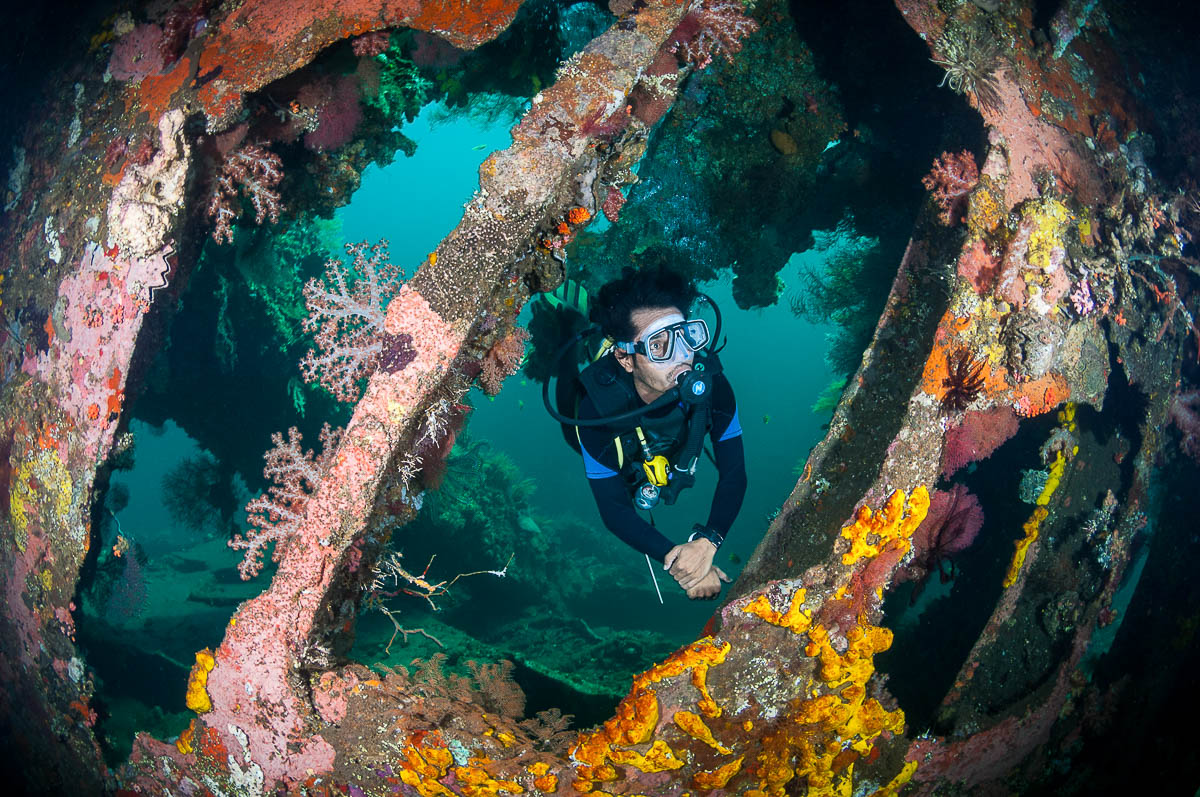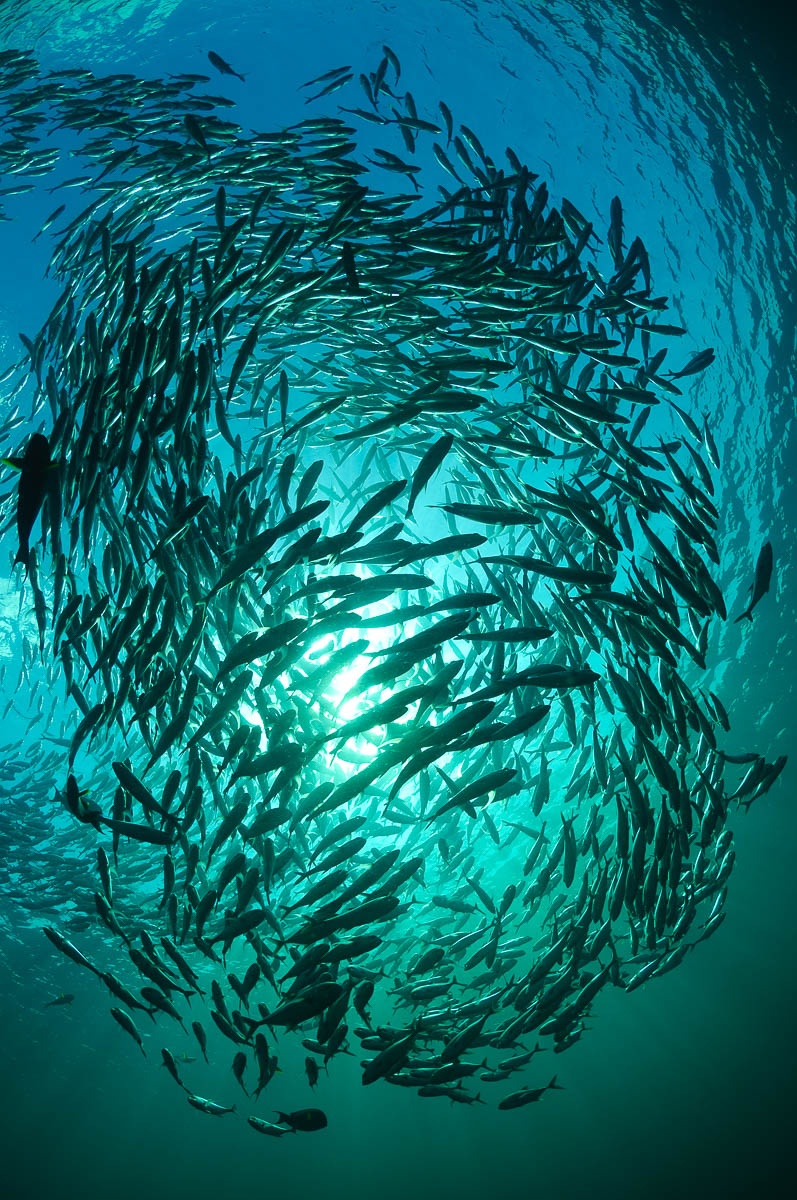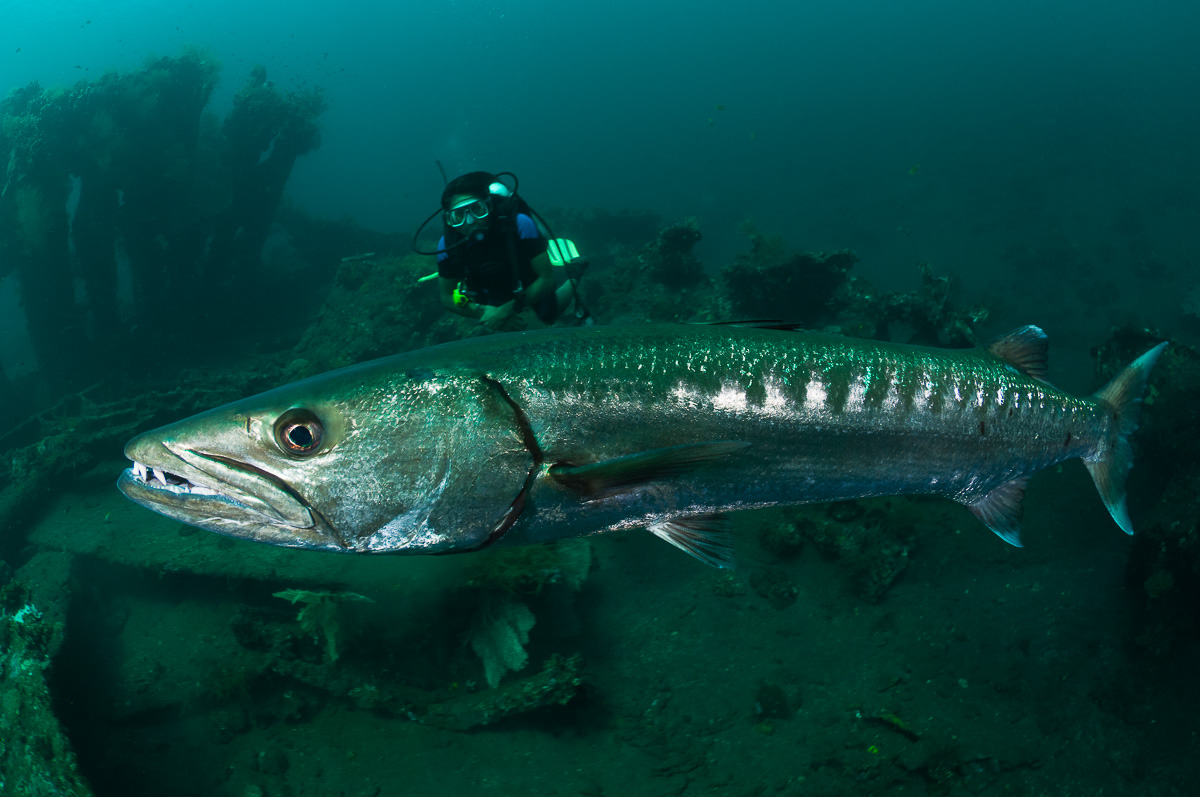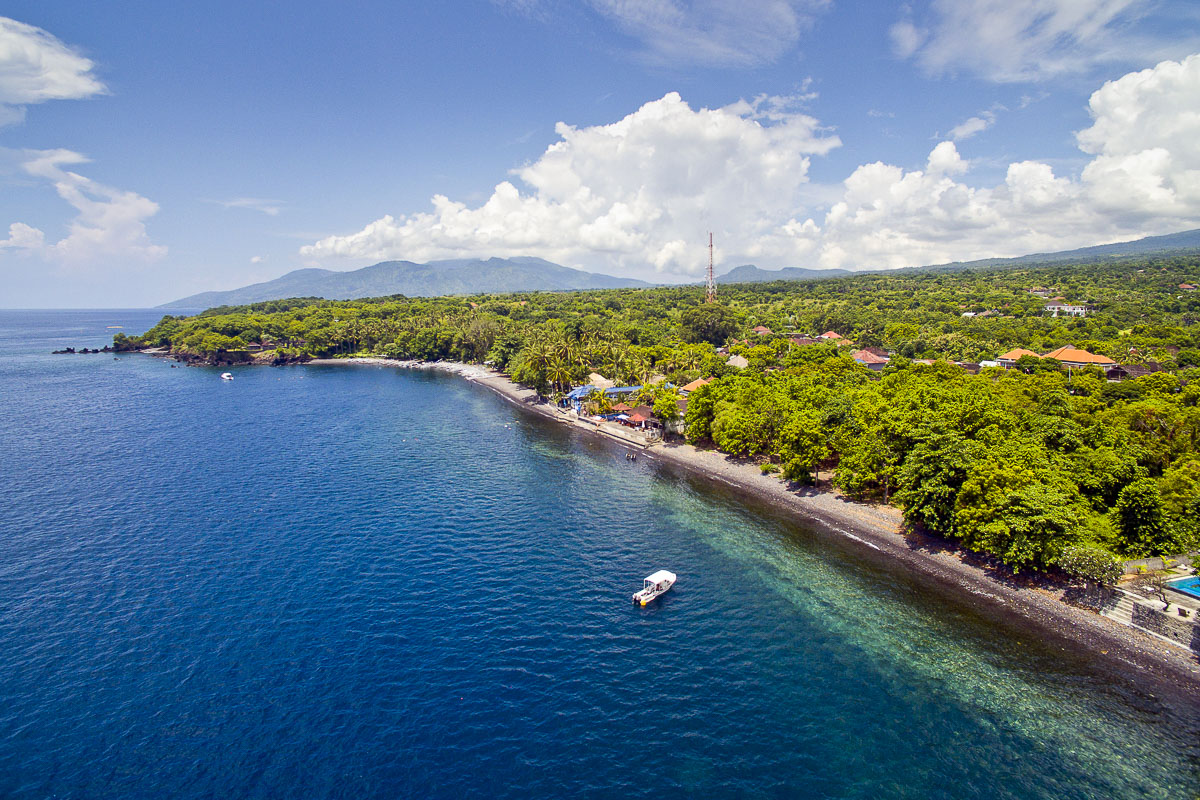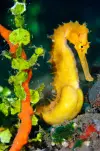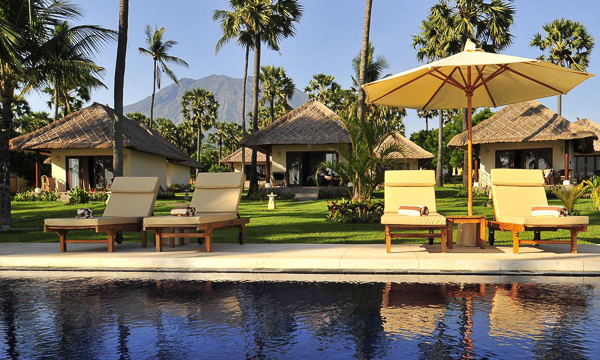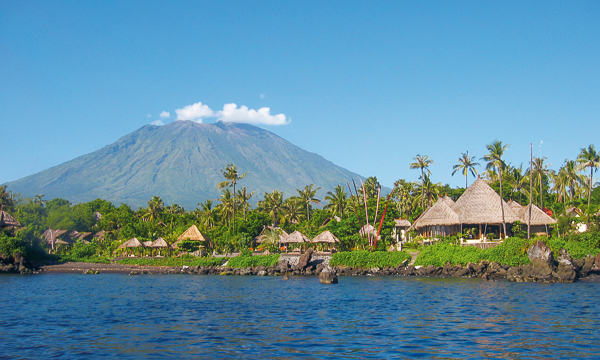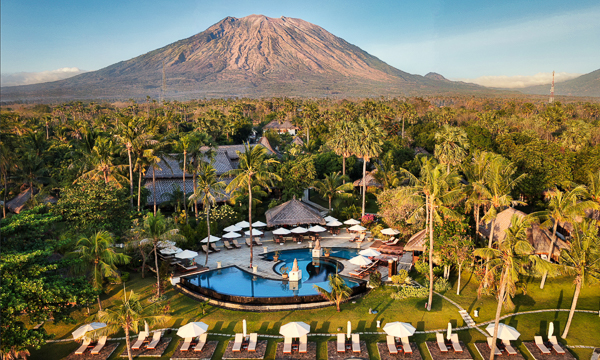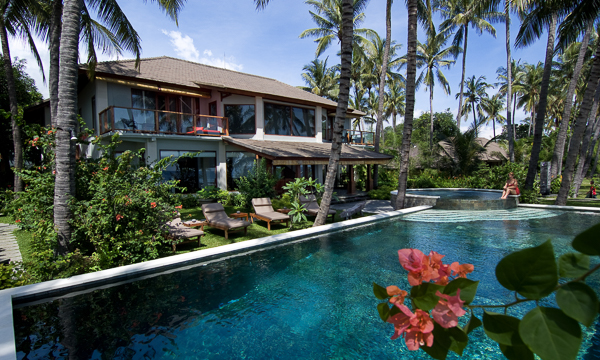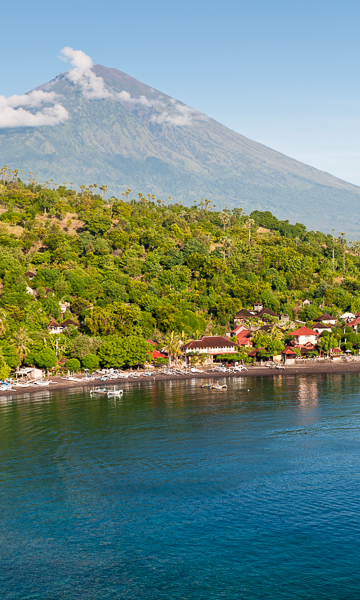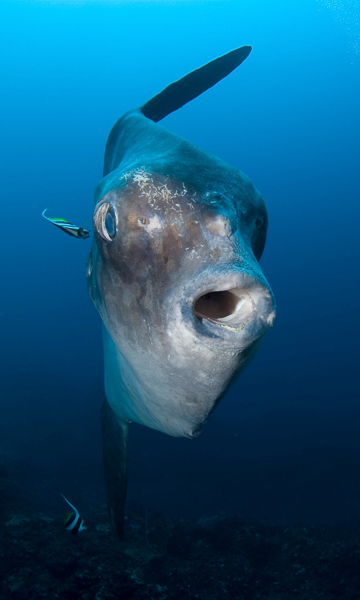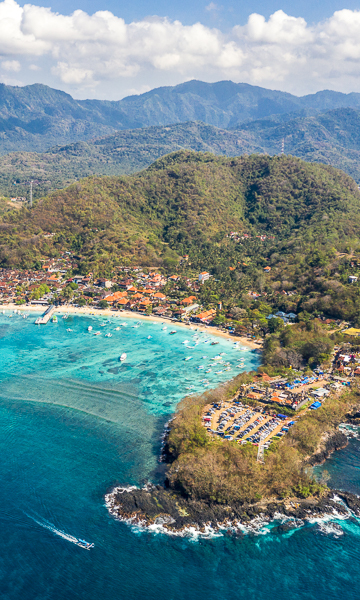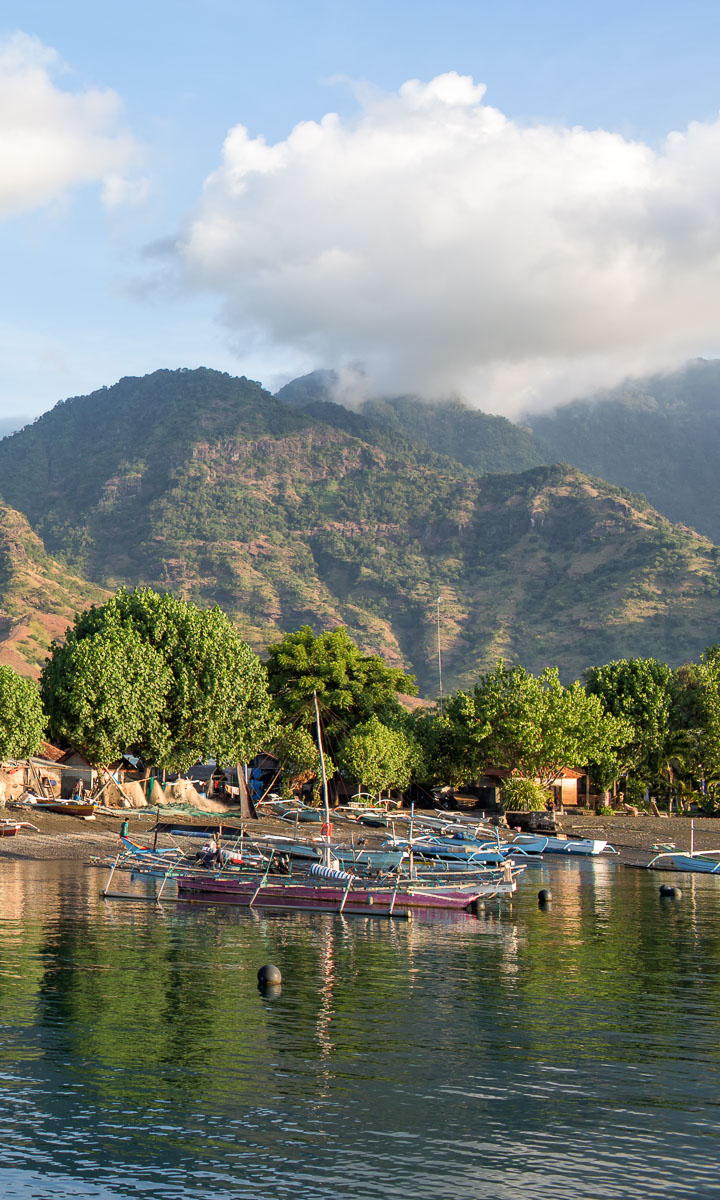
Scuba diving in
TulambenHighlights
- Dive the USS Liberty, one of the world’s most accessible wrecks
- Encounter schools of jackfish and bumphead parrotfish
- Look out for whitetip and blacktip reef sharks
- Watch the Liberty come alive at night with shrimps and crabs
Tulamben’s diving revolves around one of the world’s most accessible wreck sites - the USS Liberty (USAT Liberty). Lying just meters from the black pebble shoreline, this wreck provides a genuine opportunity to explore history and witness the power of nature to create a vibrant, thriving ecosystem. But look beyond the wreck itself and you’ll find an array of incredible experiences from sandy slopes and sheer walls, to massive Napoleon fish and schooling bumphead parrotfish.
Diving in Tulamben, Bali
- Whitetip reef sharkYear round
- Hawksbill turtleYear round
- BarracudaYear round
- TrevallyYear round
- Bumphead parrotfishYear round
- Pygmy seahorseNot frequently
- Giant frogfishYear round
- Exotic NudisYear round
- Plentiful reef lifeYear round
- Soft coralsYear round
- WrecksYear round
For most people, Tulamben’s diving is famous for one thing only – the wreck of the USAT Liberty which lies just meters off the beach. Although no Tulamben diving package would be complete without visiting this famous wreck, the area also offers some fantastic reef dive sites to the east and west – well known for their biodiversity. In fact, Tulamben has some of the highest numbers of fish and invertebrate species recorded in Indonesia.
The Liberty Wreck dive site
Tulamben’s Liberty Wreck dive site lies roughly 40m from the beach, with the shallowest parts sitting in just a few meters of water. The boat rests on its side with the bow pointing to the north and the superstructure facing away from the beach towards deeper water. To dive the wreck, visitors simply gear up on the beach and swim out across a sandy plain. Divers can then descend into the deeper sections where they can investigate the engine room, swim out to the bow, or search for the remains of the stern gun.
Exploring the structure of the wreck is an amazing experience in itself! But for most visitors, it is the sheer diversity and amount of life that makes this dive so special. Today, the entire wreck is carpeted in soft corals, sponges and other encrusting life, all surrounded by clouds of reef fish, both big and small. In fact, the Liberty has become renowned for its schools of jackfish and bumphead parrotfish as well as resident great barracuda. Bigger fish are often spotted around the wreck including turtles, reef sharks, eagle rays and even the elusive mola mola during the summer months. Visitors can also find loads of interesting macro life as well as sweetlips, anemonefish, filefish, and more.
A second, far smaller wreck can now be found at Kubu, to the northwest. This site is also great for both beginners and more experienced divers, with plenty of marine life, a VW vehicle in the storage area, and a short swim-through to explore.
Coral Garden and The Drop-Off
Heading east from the Liberty, guests will find several more of Tulamben’s superb dive sites. The closest is Coral Garden, also known as Paradise Reef, with its sloping coral reef extending out into the bay. This area is well known for its biodiversity and is a fantastic spot to find interesting juveniles, ribbon eels, camouflaged scorpionfish and the elusive cornetfish. Macro life is also prolific here and there are always lots of interesting nudibranchs and crustaceans.
Further east still, lies The Drop Off, featuring a sheer wall section dropping off into the depths and some big sponges and sea fans. This site is well known for sightings of bigger fish when the currents run around the headland, but is also home to some beautiful schools of fish in the shallows.
More diving east of the wreck
Further east is Emerald, Batu Kelebit, Alamanda and other sites, including the well-known muck diving sites at Seraya. These dive sites feature short walls separated by saddles of coral and sand chutes. There are some nice areas of corals, big sponges and sea fans, and fields of the feathery hydroids. These sites are ideal for spotting big cuttlefish in the shallows and reef sharks cruising in deeper water. Visitors may also find small schools of snapper, sweetlips and goatfish, as well as critters like leaf scorpionfish, nudibranchs and the occasional ghost pipefish.
Diving Environment
Wreck diving, reef diving
Beginner upwards
Year round, with great conditions and less visitors September - November
5 - 35m+
10 - 25m+
25 - 28C
Top tips
- Hire one of Tulamben’s famous porters to carry your equipment and help support the local community
- Stay overnight and dive early morning to see the bumphead parrotfish and avoid the day-trip crowds
- Look out for whitetip and blacktip reef sharks on the deeper section of the wreck or over on the Drop Off
About Tulamben, Bali
Despite being just a few hours from the main tourist areas, Bali’s northeast coast still retains a peaceful, more rural atmosphere. Far fewer tourists pass through here, opening a window to a more rural and authentic Bali. But that doesn’t mean you’ll be bored. Tulamben still offers many of the cultural and nature-based activities that Bali is famous for. Being in the rain shadow of the volcanoes means that the scenery is also remarkably different. Visitors will find the area much drier and dusty fields of cactus are a common sight.
Tulamben started life as a fishing village but everything changed in 1963, when a lava flow from the erupting Mt Agung pushed the USS Liberty off the beach where it had run aground and out under the waves. Tulamben survived the eruption and gained an incredible dive site - the rest is diving history. Today, the Liberty attracts divers from all over the island, each drawn by the promise of a dive on what has to be one of Indonesia's best and most accessible wrecks.
Getting to Tulamben
Depending on traffic, Tulamben is a 3 - 3.5-hour drive from south Bali. The road passes through Padangbai, Candidasa and the charming village of Amed, before turning north-west along the coast to Tulamben. All the resorts can arrange transport for guests or they can simply hire a driver from the south themselves.
Many divers visit Tulamben as a day trip from south Bali. But given the length of the journey and the many accommodation options, we would recommend staying in Tulamben for at least a few nights. This allows visitors to get a much better appreciation of the area.
Where to stay in Tulamben
From its origins as a small fishing village, Tulamben has grown into a well-established tourism area. Hugging the road east and west of the village, visitors will find plenty of small dive centres, homestays and some very nice resorts and private villas. Accommodation can be found for any budget and many dive centres work with a partner resort to provide the ultimate Tulamben diving package. The bigger resorts typically have their own in-house dive centre, pool and restaurant.
Weather and diving seasons
Like other areas in this part of Bali, Tulamben’s diving is year-round. That said, it’s common to experience rougher seas in the early part of the year, and colder water in the summer months of June through to August. Probably the best time of year to dive at Tulamben is from September through to November or December. The area is a little quieter out of the main holiday season and the cold-water upwellings during summer ensure a bloom of life several months later.
Like the rest of Bali, the wet season runs roughly from November through to March, whilst the dry season runs from May through to September. Water temperatures are normally 26 - 28C with cooler upwellings in the summer months.
